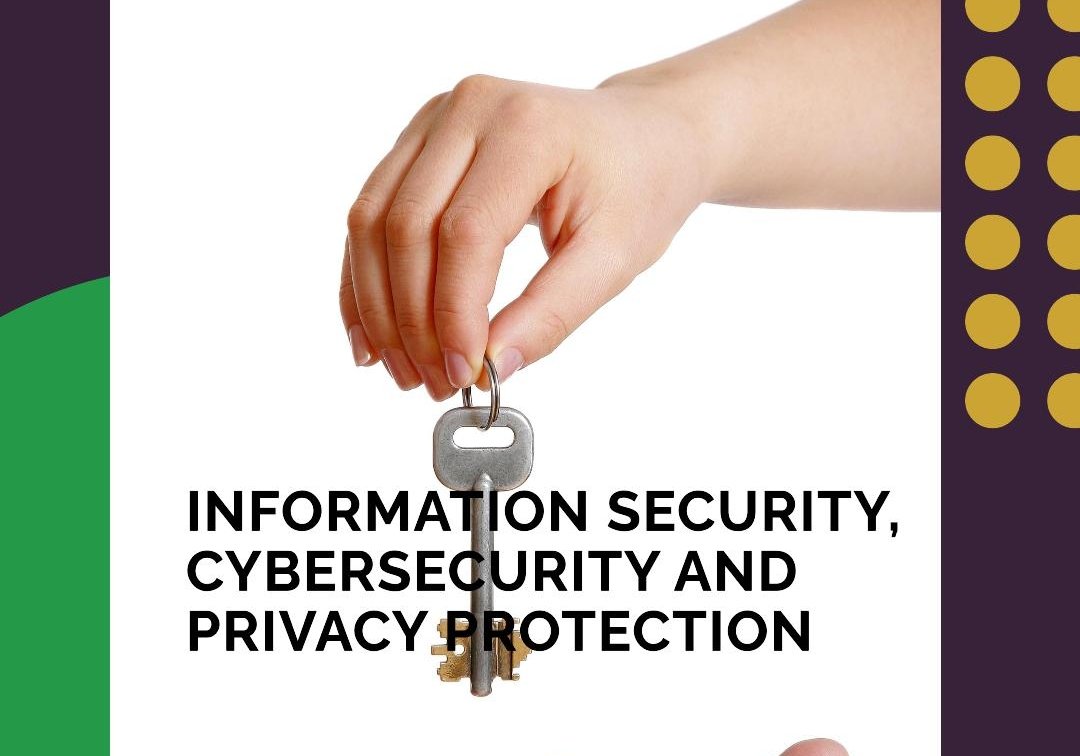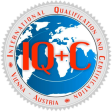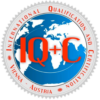ISO/IEC 27001:2022 Information security, cybersecurity, and privacy protection - Information security management systems - Requirements
ISO/IEC 27001:2022 is an international standard that specifies requirements for establishing, implementing, maintaining, and continually improving an information security management system (ISMS). The standard aims to help organizations manage the security of assets such as financial information, intellectual property, employee details, and information entrusted by third parties.
Key Aspects of ISO/IEC 27001:2022
- Objective:
- To provide a framework for managing information security risks and protecting information assets.
- Scope:
- Applicable to any organization, regardless of size, type, or nature, that seeks to establish, implement, maintain, and continually improve an ISMS.
- Benefits:
- Protects confidential information.
- Enhances risk management.
- Ensures compliance with legal and regulatory requirements.
- Builds trust with clients and stakeholders.
- Promotes continuous improvement of information security practices.
Structure of ISO/IEC 27001:2022
The standard follows the high-level structure (HLS) common to other ISO management system standards, making it easier to integrate with other management systems. The main clauses are:
- Clause 1: Scope
- Defines the scope of the standard and the intended outcomes of implementing an ISMS.
- Clause 2: Normative References
- Provides references to other documents that are indispensable for the application of ISO/IEC 27001:2022.
- Clause 3: Terms and Definitions
- Defines terms used in the standard to ensure a common understanding.
- Clause 4: Context of the Organization
- Requires the organization to understand its context, including internal and external issues, interested parties, and the scope of the ISMS.
- Clause 5: Leadership
- Emphasizes the role of top management in demonstrating leadership and commitment to the ISMS.
- Includes requirements for establishing an information security policy and defining organizational roles, responsibilities, and authorities.
- Clause 6: Planning
- Addresses actions to address risks and opportunities, set information security objectives, and plan changes to the ISMS.
- Clause 7: Support
- Covers resources needed for the ISMS, including human resources, infrastructure, and environment.
- Includes requirements for competence, awareness, communication, and documented information.
- Clause 8: Operation
- Deals with operational planning and control, including the processes needed to meet information security objectives.
- Includes requirements for risk assessment and risk treatment plans.
- Clause 9: Performance Evaluation
- Requires monitoring, measurement, analysis, and evaluation of the ISMS.
- Includes requirements for internal audit and management review.
- Clause 10: Improvement
- Focuses on continual improvement of the ISMS.
- Includes requirements for managing nonconformities and taking corrective actions.
Implementation Process
- Preparation:
- Understand the requirements of ISO/IEC 27001:2022 and assess the current processes and practices of your organization.
- Gap Analysis:
- Conduct a gap analysis to identify areas that need improvement to meet the standard’s requirements.
- Implementation:
- Develop and implement procedures and practices that align with ISO/IEC 27001:2022. Ensure all staff are trained and aware of these procedures.
- Documentation:
- Create and maintain the necessary documentation, including an information security policy, risk assessment, risk treatment plan, procedures, and records.
- Internal Audit:
- Conduct internal audits to verify the effectiveness of the ISMS and identify areas needing improvement.
- Management Review:
- Perform regular management reviews to assess the suitability, adequacy, and effectiveness of the ISMS.
- Certification Audit:
- Engage an accredited certification body to perform an external audit. The audit will be conducted in two stages:
- Stage 1: Review of documentation to ensure compliance with ISO/IEC 27001:2022.
- Stage 2: On-site audit to verify the implementation of processes and procedures.
- Engage an accredited certification body to perform an external audit. The audit will be conducted in two stages:
- Certification Decision:
- Based on the audit findings, the certification body will decide whether to grant ISO/IEC 27001:2022 certification.
- Surveillance Audits:
- Periodic surveillance audits are conducted to ensure ongoing compliance with ISO/IEC 27001:2022.
- Recertification:
- The certification is typically valid for three years, after which a recertification audit is required.
Annex A: Reference Control Objectives and Controls
Annex A of ISO/IEC 27001:2022 lists reference control objectives and controls aligned with ISO/IEC 27002. These controls are grouped into categories and address various aspects of information security, such as:
- Information security policies
- Organization of information security
- Human resource security
- Asset management
- Access control
- Cryptography
- Physical and environmental security
- Operations security
- Communications security
- System acquisition, development, and maintenance
- Supplier relationships
- Information security incident management
- Information security aspects of business continuity management
- Compliance
ISO/IEC 27001:2022 Information security, cybersecurity, and privacy protection - Information security management systems - Requirements
ISO/IEC 27001:2022 is an international standard that specifies requirements for establishing, implementing, maintaining, and continually improving an information security management system (ISMS). The standard aims to help organizations manage the security of assets such as financial information, intellectual property, employee details, and information entrusted by third parties.
Key Aspects of ISO/IEC 27001:2022
- Objective:
- To provide a framework for managing information security risks and protecting information assets.
- Scope:
- Applicable to any organization, regardless of size, type, or nature, that seeks to establish, implement, maintain, and continually improve an ISMS.
- Benefits:
- Protects confidential information.
- Enhances risk management.
- Ensures compliance with legal and regulatory requirements.
- Builds trust with clients and stakeholders.
- Promotes continuous improvement of information security practices.
Structure of ISO/IEC 27001:2022
The standard follows the high-level structure (HLS) common to other ISO management system standards, making it easier to integrate with other management systems. The main clauses are:
- Clause 1: Scope
- Defines the scope of the standard and the intended outcomes of implementing an ISMS.
- Clause 2: Normative References
- Provides references to other documents that are indispensable for the application of ISO/IEC 27001:2022.
- Clause 3: Terms and Definitions
- Defines terms used in the standard to ensure a common understanding.
- Clause 4: Context of the Organization
- Requires the organization to understand its context, including internal and external issues, interested parties, and the scope of the ISMS.
- Clause 5: Leadership
- Emphasizes the role of top management in demonstrating leadership and commitment to the ISMS.
- Includes requirements for establishing an information security policy and defining organizational roles, responsibilities, and authorities.
- Clause 6: Planning
- Addresses actions to address risks and opportunities, set information security objectives, and plan changes to the ISMS.
- Clause 7: Support
- Covers resources needed for the ISMS, including human resources, infrastructure, and environment.
- Includes requirements for competence, awareness, communication, and documented information.
- Clause 8: Operation
- Deals with operational planning and control, including the processes needed to meet information security objectives.
- Includes requirements for risk assessment and risk treatment plans.
- Clause 9: Performance Evaluation
- Requires monitoring, measurement, analysis, and evaluation of the ISMS.
- Includes requirements for internal audit and management review.
- Clause 10: Improvement
- Focuses on continual improvement of the ISMS.
- Includes requirements for managing nonconformities and taking corrective actions.
Implementation Process
- Preparation:
- Understand the requirements of ISO/IEC 27001:2022 and assess the current processes and practices of your organization.
- Gap Analysis:
- Conduct a gap analysis to identify areas that need improvement to meet the standard’s requirements.
- Implementation:
- Develop and implement procedures and practices that align with ISO/IEC 27001:2022. Ensure all staff are trained and aware of these procedures.
- Documentation:
- Create and maintain the necessary documentation, including an information security policy, risk assessment, risk treatment plan, procedures, and records.
- Internal Audit:
- Conduct internal audits to verify the effectiveness of the ISMS and identify areas needing improvement.
- Management Review:
- Perform regular management reviews to assess the suitability, adequacy, and effectiveness of the ISMS.
- Certification Audit:
- Engage an accredited certification body to perform an external audit. The audit will be conducted in two stages:
- Stage 1: Review of documentation to ensure compliance with ISO/IEC 27001:2022.
- Stage 2: On-site audit to verify the implementation of processes and procedures.
- Engage an accredited certification body to perform an external audit. The audit will be conducted in two stages:
- Certification Decision:
- Based on the audit findings, the certification body will decide whether to grant ISO/IEC 27001:2022 certification.
- Surveillance Audits:
- Periodic surveillance audits are conducted to ensure ongoing compliance with ISO/IEC 27001:2022.
- Recertification:
- The certification is typically valid for three years, after which a recertification audit is required.
Annex A: Reference Control Objectives and Controls
Annex A of ISO/IEC 27001:2022 lists reference control objectives and controls aligned with ISO/IEC 27002. These controls are grouped into categories and address various aspects of information security, such as:
- Information security policies
- Organization of information security
- Human resource security
- Asset management
- Access control
- Cryptography
- Physical and environmental security
- Operations security
- Communications security
- System acquisition, development, and maintenance
- Supplier relationships
- Information security incident management
- Information security aspects of business continuity management
- Compliance

Conclusion

Conclusion
Need help? Book a meeting at a time to suit your schedule
If you need assistance, we're here to help! You can book a call with us at a time that suits your schedule. Simply let us know your availability. Whether you have questions, need guidance, or require assistance with our services, we're committed to ensuring you receive the help you need. Contact us today to schedule your call!
Certification Milestones
-
Free strategic meeting
-
Your tailored proposal
-
Confirmation
-
Stage 1 Audit date
-
Stage 2 Audit date (Certification)
-
Obtain your Certificate
Need help? Book a meeting at a time to suit your schedule
If you need assistance, we're here to help! You can book a call with us at a time that suits your schedule. Simply let us know your availability. Whether you have questions, need guidance, or require assistance with our services, we're committed to ensuring you receive the help you need. Contact us today to schedule your call!
Certification Milestones
-
Free strategic meeting
-
Your tailored proposal
-
Confirmation
-
Stage 1 Audit date
-
Stage 2 Audit date (Certification)
-
Obtain your Certificate


